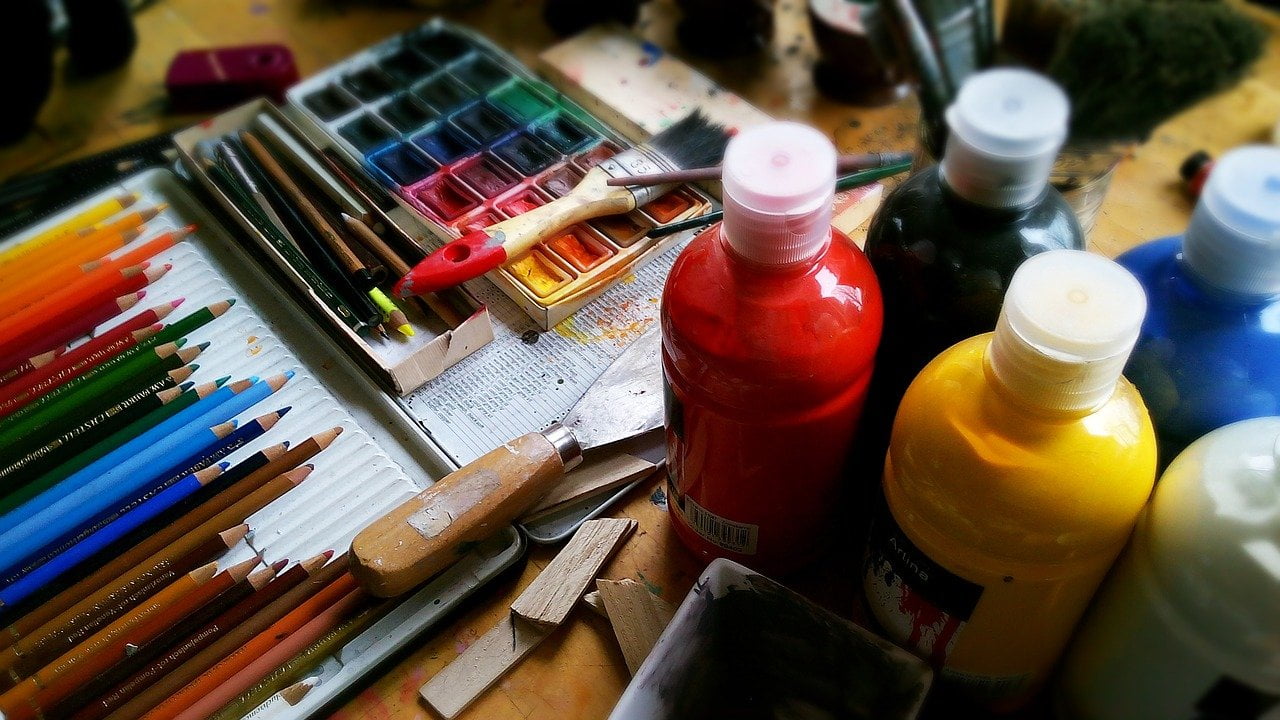According to Statista, global online art sales increased by 4% from 2018 to 2019 to approximately $4.82 billion. Estimates point that it will nearly double to $9.32 billion by 2024, as the pandemic has had a huge impact on the online art market.
Q2 2021 hedge fund letters, conferences and more
In this mouthwatering outlook, how much has the ensuing e-commerce impacted the online art market?
The Future of the Online Art Market
In the global online art market, buyers and sellers trade works of art via the internet. This includes antiques, digital artworks, and collectibles that are usually related to the field of arts and culture.
Even before the pandemic, consumers were increasingly preferring to buy art online as, according to a 2019 global survey of art buyers, 29% of respondents stated that they favor buying art online –an 8% increase from the previous year.
However, COVID-19 has hugely impacted the online art market with galleries and other venues closing to the public, and art lovers turning to online platforms to acquire their favorite works.
In 2020, the total value of the art market plunged by nearly $14 billion over the previous year, while online art sales roughly doubled by hitting more than $12 billion and accounting for almost 25% of global sales.
According to MyArtBroker, Banksy and Picasso are the most Googled artist in the world, with Banksy being the most popular in 30 European countries such as the U.K., Finland, and Switzerland.
Covid, The Game Changer
When the pandemic started, auction houses had to bolster their online sales platforms and streaming events. The impact was such that the online sales of Sotheby’s more than doubled from 2019 to reach $575 million, while those of Christie’s grew by 260% YoY.
Analyzing this growth in the light of the art dealer market, results are just as impressive.
Of all the art dealer sales last year, those made through online channels accounted for approximately 30% of the total, with an extra 9% of transactions coming from art fairs’ Online Viewing Rooms (OVRs). In this context, paintings were the most common fine art bought online during the pandemic.
On top of the huge leap forward in 2020, the online art market is set to grow this year due to the boom of crypto art.
Also known as the non-fungible token (NFT) art market, crypto art is flooded with NFT-based artworks “that can be traded as original pieces, even if their copies are shared online.”
“NFTs are unique digital commodities stored in blockchain. They are used in the art market to prove the authenticity of digital works of art, as a file that is turned into an NFT becomes a unique asset.”
According to the Influencer Marketing Hub, one NFT artwork by a digital artist called Beeple sold for $69 million at Christie’s, and it is the most expensive non-fungible token sold worldwide to date.
The Art World Within Reach
In this outlook, e-commerce platforms have launched into creating solid art offerings to lure art lovers and increase online sales.
For instance, Artsy’s vast artwork catalog –from rising artists to Picasso– has prompted galleries to work on similar offerings. The platform allows clients to search for countless pieces by artist name or gallery, medium, price, ethnicity, movement, and even subject matter.
Similarly, and with a 4,5-star rating on TrustPilot, 1stDibs is “the world’s leading online marketplace for rare and desirable objects.” It is the “go-to source for those who have a passion for the most beautiful things on earth.”
Amazon Inc (NASDAQ:AMZN) –with Amazon Handmade– and Shopify Inc (NYSE:SHOP) are also looking for positioning in that space, while niche platforms like FineArtAmerica, Saatchi Art, and TurningArt are increasingly specializing their offerings.
However, since most platforms charge an annual fee and imply the mediation of a dealer, artists are gradually turning to social media to display and sell their work with great advantages.
Janna Watson, a well-known Canadian artist who sells art around the globe, has embraced multi-channel art marketing. This gave her the opportunity to analyze channels from sellers’ perspective. Watson asserts that “Online platforms like Artsy and 1stDibs, as well as gallery websites, are controlled by the dealer. On the other hand, Instagram offers a voice to the artist by giving them control and personalization.”
Through social media, they can expand their reach to local and international clients who can build their art collections with just one click.
Also, artists have full control over how artworks are curated and sold, and can interact with hundreds of clients directly –something impossible in the confined space of a gallery.
As Watson says, “On Instagram, collectors not only browse for a single painting or a sculpture … they browse for a cosmos of artists and their whole catalog, which represents a unique opportunity for both the artist and the buyer.”
Artists, however, need to be careful of not piling social media work on their backs, and should rely on social media managers. Also, they should be aware that different device screens can create different tones, affecting the clients’ perception of the artwork.






